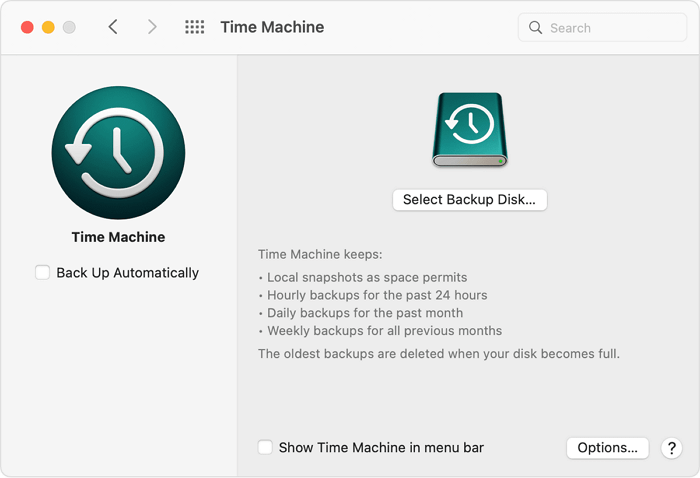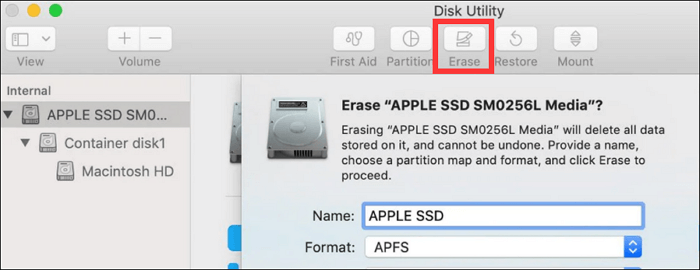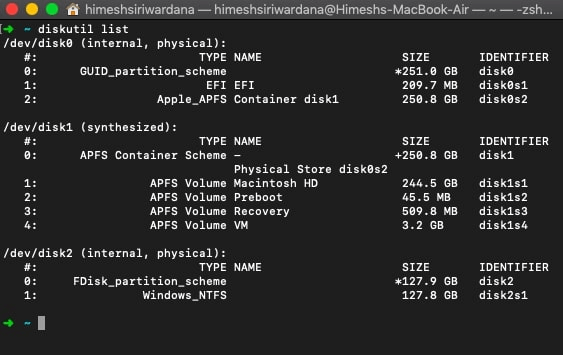How to Format Hard Drive for Mac [Full & Detailed Guide]
You may know how to use Mac to format external hard drive. However, do you know how to format an internal hard drive for Mac? In this article, I will discuss how to format hard drive for Mac and introduce two ways to solve this problem. So let's read and learn.
You'd need to format a hard drive for a Mac for many reasons. However, whatever your needs, knowing the proper way to format your hard drive is of vital importance. How can you format a hard drive for Mac without losing data? It matters a lot. Let's learn it in the next paragraph.
How to Format Hard Drive for Mac Without Erasing?
Losing data might be heartbroken. Hence, formatting a hard drive for Mac without losing data is a perfect way to prevent data loss. You can know two ways to format your hard drive for Mac without losing data. The two ways are as follows:
Method 1. How to Format Hard Drive for Mac - Disk Utility
Method 2. How to Format Hard Drive for Mac - Terminal Command
The two methods are the most effective ways to format a hard drive for Mac. Besides, if your data is rather important to you, you can back it up with Time Machine before formatting your hard drive. There is a link to help you learn how to use Time Machine.

Ultimate Guide to Mac Time Machine Backup
Time Machine is the macOS built-in data backup tool. You can use it to back up different versions of selected files and folders.

Now, let's see the two ways to format a hard drive for Mac in detailed steps.
Method 1. How to Format Hard Drive for Mac - Disk Utility
Disk Utility is a built-in system utility for formatting, backup, and compression in macOS. It's a Mac version of Disk Management tool that works rather useful in formatting. Now, let's see how to format a hard drive for Mac with it.
Step 1. Launch the "Disk Utility" from "Applications".
Step 2. Pick the drive you want to format from the left panel.
Step 3. Click on the Erase button, and you can see a new window.
Step 4. You need to determine the name and format of your drive.
Name: You can give whatever name you like to your drive.
Format: The most recommended format is APFS or Mac OS Extended (Journaled). You can also choose other formats according to your requirements.

Besides "Disk Utility", you can also use another way to format hard drives for your Mac. Let's see how in the next part.
Method 2. How to Format Hard Drive for Mac - Terminal Command
The Terminal Command has the same functions as "Disk Utility". It can also format your hard drives. However, it is more complicated than "Disk Utility". Hence, be careful when you type the syntax. Now, let's see the detailed steps.
Step 1. Find the magnifying glass on Mac and type "Terminal".
Step 2. Type the following command to locate the hard drive you want to format:
diskutil list

Step 3. Then, choose your hard drive and type the following command:
diskutil erasedisk FILE_SYSTEM DISK_NAME DISK_IDENTIFIER
File System: You can use HFS+, APFS, or other formats that are compatible with Mac.
Disk Name: You can give a new name to your hard drive.
Disk Identifier: It refers to the number of your targeted drive.
You can format your hard drive for your Mac to any format you want with the help of "Disk Utility" and "Terminal Command Line". However, what is the best file format for Mac? Continue to read.
Bonus Tip: What Is the Best Format for Mac?
Different file system format has different compatibility. There are many types of formats, such as APFS, FAT32, exFAT, and so on. Are you confused by them? Which is the best format for Mac? Don't worry! In this part, you can learn their detailed features. This table can help you learn.
| Features | APFS | HFS+ | FAT32 | exFAT |
|---|---|---|---|---|
| Pros |
|
|
|
|
| Cons |
|
|
|
|
| System |
|
|
|
|
| File Size |
|
|
|
|
According to the table, we know that we can choose one file format according to our needs. Among them, APFS and HFS+ are better choices for Mac. You can format your hard drive for Mac by following Method 1 or Method 2.
Conclusion
Now, do you know how to format a hard drive for Mac? This article gives two ways to format your hard drives. Besides, it is important to choose the most suitable format for your hard drive when formatting it. This article gives a detailed comparison of NTFS, APFS, FAT32, exFAT, and HFS+. You can choose a specific format based on your needs and device.
Besides, there are some links to help if you have other questions about these file formats:
FAQs About How to Format Hard Drive for Mac
After reading this page, do you have any other questions about formatting hard drives for Macs? This part lists three more questions to help.
1. What should I format my hard drive for Mac?
You can choose a format based on your needs. Mac OS Extended (Journaled) is a good option for most Mac users because it is compatible with all Macs. Apple File System is only suitable for macOS 10.13 or later. FAT32 and exFAT are compatible with both PC and Macs.
2. Is exFAT ok for Mac?
Sure, it has no file size limitation. Mac and Windows are compatible with exFAT. It's the ideal format if you always need to use Macs and Windows.
3. Should I use APFS or Mac OS Journaled?
They are both compatible with Mac. You can choose a file format based on your needs and the version of your device. For example, Mac OS Journaled works on macOS 10.12 or earlier, while APFS works on macOS 10.13 or later.
Related Articles
- Solutions for Disk Not Ejected Properly on Mac
- Solved: Getting Files Ready for Installation Stuck at 0%, 1%, 10%, 100%
- How to Fix MacBook Pro/Air/iMac Won't Turn on with Black Screen [6 Solutions]
- Reset Mac Password if You Forgot the Password [with Four Simple Methods]